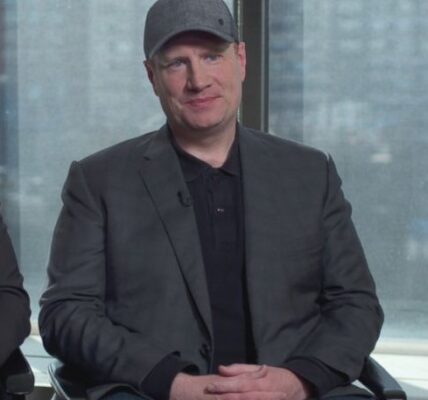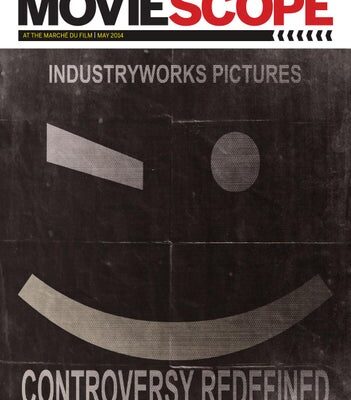Phil Clapp CEO, Cinema Exhibitors’ Association
To the casual observer, the exhibition industry looks to be breezing through what had threatened to be the most turbulent period since the Eighties. The centenarian cinema business was not meant to skip merrily through the crash, and possibly only James Cameron was sure that 3D really would add such a profitable extra dimension to the mix.
The Cinema Exhibitors’ Association (CEA), however, has seen this cheery script too many times to wholeheartedly buy it. The trade body, which represents around 90 per cent of cinema operators, knows that box-office numbers tend to be reported, like football results, in terms of triumph and disaster, shorn of historical context.
Nonetheless, chief executive Phil Clapp’s claims that the theatrical business is based on “fragile” economics needs to be justified. What he offers is a measured and ultimately positive argument; at the heart of it is the sense that D-cinema offers the potential for something of a renaissance. Exhibitors should be able to exert an unprecedented degree of influence over their business, programming a wider variety of content at the flick of the switch and being more responsive to consumer demand.
The fragility argument is partly based on the realistic assessment that, while the digital future may be
bright, getting there will be tough. In the short-term, there is no room for complacency; while a stellar 2009 and the success of 3D is welcome, a number of the key Hollywood mega-franchises on which recent success has been built are reaching the end of their natural lives: Harry Potter, Twilight, Batman, etc.
And the phenomenon of Avatar should not be taken as a simple template for 3D. “There is a concern about quality control of 3D films coming through,” says Clapp, now in his third year at the CEA. “Clearly as breadth increases and number come through rises, the quality will vary as the barriers for entry come down. There is a danger of 3D fatigue.”
While Clapp is cautiously optimistic about the next few years, partly predicated on the idea that the industry will find a new Twilight success story, he knows that strong and sustainable revenues are an important factor in the transition to digital. Not least because on top of the already high cost of conversion, cinemas and the wider industry are burdened with a period of hybrid business, running both 35mm and digital. The critical missing factor is the infrastructure that will allow digital files to be sent and accessed at the push of a button. “We have largely replaced a ferry of vans ferrying around around 35mm reels with a flotilla of vans ferrying around DCPs [digital copies].”
The CEA has played its part in trying to support schemes to help finance the switch for smaller cinemas with the Digital Funding Partnership (UK), but Clapp accepts that a proportion will fall by the wayside, either because they cannot afford to change or because they do not want to. Digital cinema represents a new business requiring a different mindset and fresh skills, and Clapp foresees new entrants, perhaps building on the pioneering creation of cinema screens in HMV shops by CEA member Curzon Artificial Eye.
Digital cinema looks like a compelling vision for an entrepreneur, given the degree of control that can be exercised over content, a strong base of consumer demand and a range of new products. The biggest new skills set will be about creating the relationship with the consumer that makes it possible to respond to and nurture demand. Those skills will include social networking, data analysis and new forms of programming— all a long distance from the traditional projectionist craft.
This vision has a problem, though, in the second big relationship for exhibitors: that with the distribution business. The two sides of the business work in harmony on areas of mutual interest such as piracy. Where interests diverge, they have generally found a way through, with the occasional skirmish in areas like release windows. At least part of that relationship is based on the simple division of labour between the two in an analogue world, but what happens when exhibitors want to take a more independent view and programme for customer demand, not the availability of prints?
It is already the source of tension, though the argument is distorted by the short-term issues of the VPF, in which distributors pay an equivalent of the existing cost of a celluloid print to help fund conversion. Understandably, they want the same control over film screenings as they had with 35mm. The future shape of the relationship is less clear. “Inevitably in business there are adversarial relationships, peaks and troughs,” says Clapp
“In a digital world, the technology allows counter programming or the screening of films that [the exhibitor thinks] could get a broader audiences, so there are inevitably going to be tensions with a distributor who wants a film on as many screens as possible. There needs to be a change from an analogue mindset.” For the CEA, the real issue remains forging a clear position for cinema in a digital world, setting out where it fits into an expanded ecosystem of home and mobile entertainment. That represents a challenge to a business model which is at least partly predicated on having a clear, and largely exclusive position, in the release schedule.
“I think it would be foolish to say that the ability of people to legitimately view film on a wide variety of platforms is not a good thing,” says Clapp. “Anything which promises and sustains a film watching culture must be a good thing. The challenge is reconciling that with the basic economics of the value chain; that’s the issue with the windows. The economic rationale remains fragile for all the success.
What we need to do is that any changes to the ecology are achieved through dialogue rather than guerrilla action from either side.” In other words, we are entering uncharted territories where dialogue and partnership hold the key to what will be a new cinema business. www.cinemauk.org.uk











